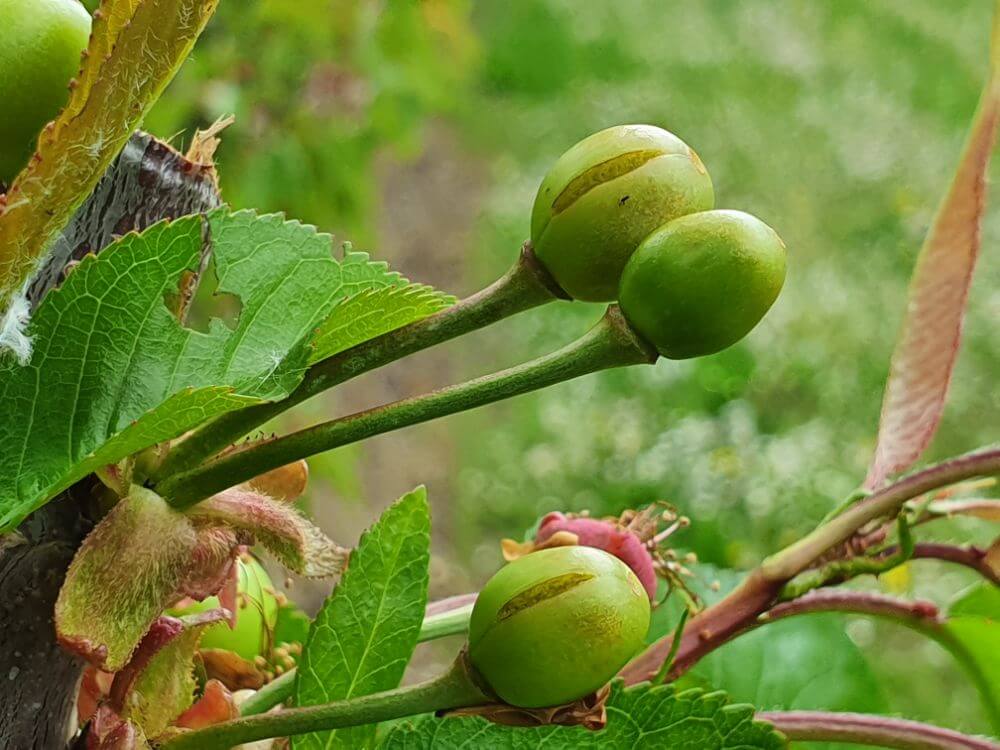In recent years, automation in agriculture has made great strides thanks to the use of robotic systems and artificial vision algorithms. These technologies enable computers to perform multiple operations, including identifying and analyzing fruits.
Thus automating tasks such as maturity assessment and harvesting. However, to effectively train machine learning algorithms,
it is essential to have specific datasets for each type of fruit.
Most fruit types, however, do not have publicly available datasets, posing a barrier to the development of such autonomous
systems.
The Cherry CO dataset
To meet this need, "Cherry CO" was developed, a new high-resolution dataset specifically designed for cherry detection and segmentation.
This dataset includes 3,006 labeled images,
collected in a cherry orchard under various environmental conditions to best represent the
variability of this system.
Each cherry was manually labeled to indicate its position, shape, and class, considering aspects such as ripeness, fruit health, and position relative to the camera.
Image acquisition and characteristics
The images were acquired over three weeks at the "Center for Advanced Fruit Studies (CEAF)" in Chile, using a Canon Rebel Ti7 camera.
To ensure scene diversity, photos were taken under different lighting conditions, showing fruits at various stages of
ripeness and from different angles.
The labeling process took about six months, during which each visible cherry was classified into one of six categories based on color and position.
The categories include: green, unripe, ripe (in the foreground), and background cherries divided into ripe and unripe, as well as a category for damaged fruits.
Challenges in segmentation
One of the main challenges faced by the researchers was the variability typical of agricultural environments, such as occlusion from leaves and branches, changes in lighting, and overlapping fruits in densely populated images.
Despite these difficulties, the Cherry CO dataset provides a wide range of examples useful for training deep learning models, ensuring a high generalization capacity of the algorithms.
DNN model performance
To evaluate performance on cherry detection and segmentation tasks, several Deep Neural Networks (DNNs) were used, including Faster-RCNN, Mask-RCNN, Mask-Swin, and networks from the YOLO family (YOLOv4, YOLOR, and YOLOv7).
Among these, YOLOv7 achieved the best overall performance, demonstrating high precision and the ability to detect fruits even in complex conditions.
In particular, it achieved an excellent balance between Precision and Recall, making it suitable for real-time applications such as video monitoring and automated harvesting.
Conclusions
Therefore, Cherry CO is a valuable resource for training models in cherry recognition and segmentation. Networks trained with this dataset can be used in autonomous applications for fruit counting, maturity assessment, and even for developing robots for automated harvesting.
In conclusion, Cherry CO adds to the (unfortunately limited) list of public datasets for fruit detection and segmentation, supporting technological innovation in agriculture and promoting the adoption of autonomous systems in cherry production.
Image by freepik
Source: Cossio-Montefinale, L., Ruiz-del-Solar, J., & Verschae, R. (2024). Cherry CO Dataset: a dataset for cherry detection, segmentation and maturity recognition. IEEE Robotics and Automation Letters, vol. 9, no. 6, pp. 5552-5558. https://doi.org/10.1109/LRA.2024.3393214
Andrea Giovannini
University of Bologna (IT)
Cherry Times - All rights reserved











